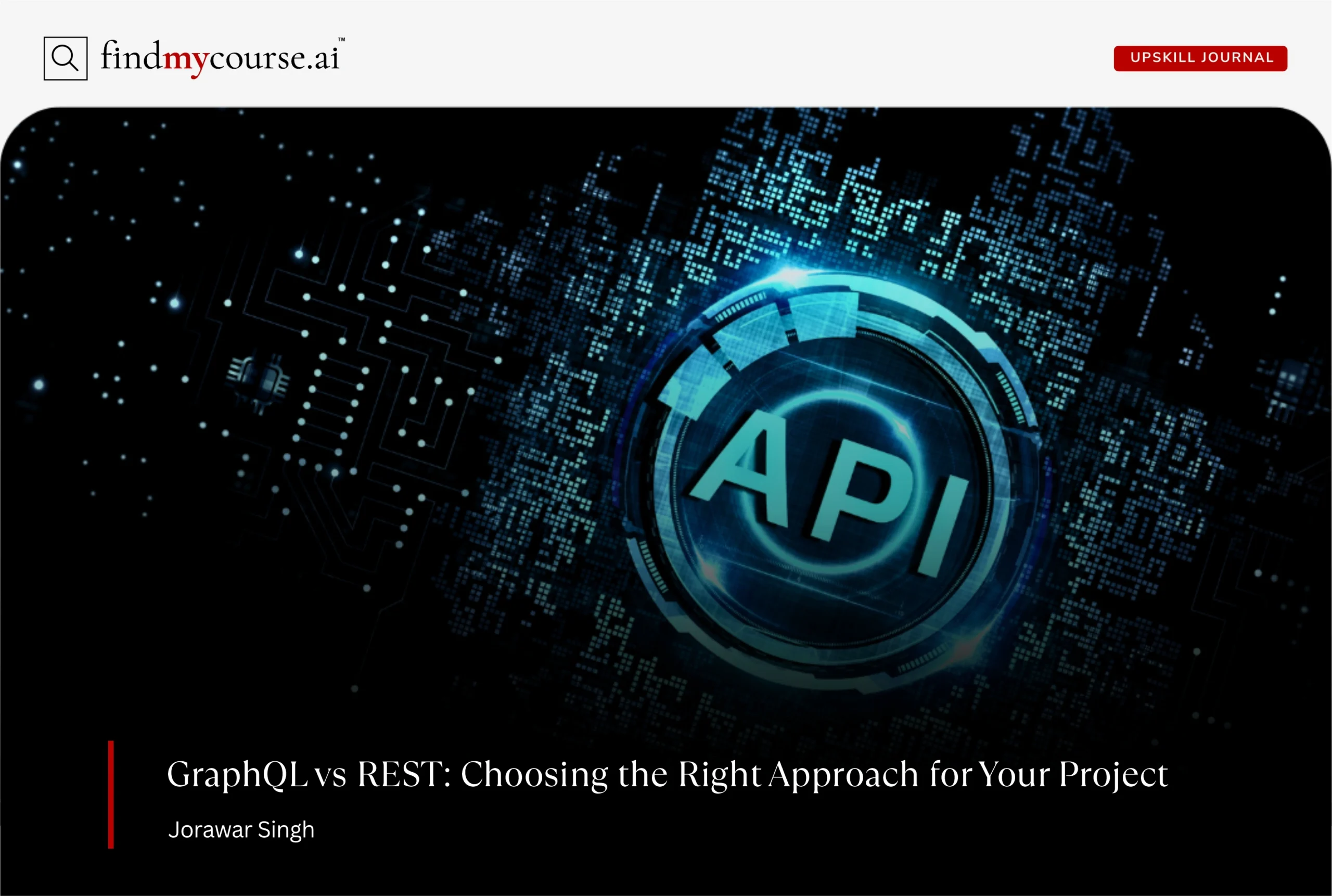In the ever-evolving world of software development, professionals constantly face choices that shape the long-term success of their projects. One of the most debated topics is GraphQL vs REST. Should you stick with the familiar REST APIs that have powered the web for decades? Or should you embrace GraphQL, the newer, more flexible approach?
If you’re aiming to upskill, lead modern projects, or simply understand what’s best for your next API design, this guide will walk you through both options. We’ll explore their strengths, limitations, and real-world applications—so you can make a confident, future-ready choice.
What Is REST?
REST, or Representational State Transfer, is the most common architectural style for building APIs. It uses HTTP methods like GET, POST, PUT, and DELETE to interact with resources identified by URLs. For example, requesting /users/123 might fetch details about a specific user.
REST is valued for its simplicity, predictability, and compatibility. It fits naturally into the web’s design, which is why so many systems and frameworks have adopted it. Teams appreciate REST because it is easy to explain, test, and scale. However, it does have limitations—especially when clients need very specific data.
What Is GraphQL?
GraphQL is a query language and runtime designed to provide more precise and efficient data fetching. Instead of hitting multiple endpoints, you send a single query to one endpoint and specify exactly what you need. If you want a user’s name, email, and their last five orders, you can request them in one round trip—nothing more, nothing less.
GraphQL also introduces strong typing through its schema. This schema defines the available data and operations, helping developers work with confidence. Features like real-time subscriptions and schema introspection make it powerful for complex, modern applications.
Key Differences: GraphQL vs REST
The debate around GraphQL vs REST comes down to how each handles data fetching, flexibility, and performance. By comparing their core traits, you can decide which approach best fits your project.
| Aspect | REST | GraphQL |
| Data Fetching | Endpoints return fixed data; can cause over-fetching or under-fetching. | Clients specify exactly what they need in one query, avoiding extra requests. |
| Complexity & Flexibility | Simple, predictable, and easy to reason about. Great for straightforward apps. | Excels with complex, interconnected data models; can aggregate data from multiple sources. |
| Caching & Performance | Leverages standard HTTP caching easily, especially for GET requests. | Harder to cache with traditional methods; requires custom caching strategies or tools. |
| Versioning | Often relies on /v1, /v2, etc., which can become difficult to maintain. | No versioning required; schemas evolve by adding or deprecating fields without breaking clients. |
| Security & Risks | Straightforward authentication and authorization. | Requires safeguards (e.g., query depth limits, complexity scoring) against heavy or malicious queries. |
| Adoption & Ecosystem | Universal support across languages and frameworks; mature tooling. | Rapid adoption by 2025, especially for data-rich, client-driven apps; hybrid models common. |
| Real-World Examples | Twitter, PayPal use REST for core APIs. | Facebook, GitHub use GraphQL for flexible client-driven data. |
When to Use REST
REST remains a trusted and versatile option for many development teams. It’s well-suited to projects where speed, simplicity, and predictability are key priorities. If you want a reliable foundation with minimal complexity, REST is a strong choice.
Opt for REST if:
- Your API is simple and resource-focused. REST works best for straightforward CRUD operations and predictable workflows.
- You need fast, reliable caching. Standard HTTP caching with REST makes performance optimization effortless.
- Your environment is legacy-heavy. REST integrates smoothly with existing systems and is familiar to most developers.
- Speed of delivery matters. REST has a shorter setup time and lower complexity, making it ideal for quick launches or MVPs.
When to Use GraphQL
GraphQL is designed for modern applications where flexibility and efficiency are essential. It shines in complex systems where clients demand precise control over data. If you’re building for growth, evolving needs, and rich user experiences, GraphQL can be transformative.
Opt for GraphQL if:
- Your data is complex and interconnected. GraphQL elegantly handles nested relationships and large data graphs.
- You want efficient data transfer. GraphQL reduces over-fetching and under-fetching by letting clients request exactly what they need.
- Your client needs evolve often. GraphQL’s schema flexibility allows APIs to grow without breaking older versions.
- You value type safety and clarity. Its schema-driven approach ensures strong typing and better developer experience.
- You’re integrating multiple backends. GraphQL can unify diverse services into a single, powerful API layer.
Building Smarter APIs with REST and GraphQL Together
Modern API design doesn’t have to be an either–or decision. Many forward-thinking teams now combine REST and GraphQL to get the best of both worlds. REST serves as the dependable backbone for stable, cache-friendly endpoints, while GraphQL provides the flexibility and precision needed for dynamic, client-driven experiences. This hybrid strategy allows you to design APIs that are both efficient today and adaptable for tomorrow.
Here’s how they can work together in one project:
- REST for core services: Use REST for resource-based endpoints such as authentication, product catalogs, or file uploads where caching and predictability are critical.
- GraphQL as an aggregator: Place GraphQL on top as a smart gateway, pulling data from REST endpoints and microservices into one flexible query.
- REST for high-traffic paths: Keep performance-sensitive endpoints in REST to leverage HTTP caching and CDN delivery.
- GraphQL for evolving needs: Use GraphQL to support personalized dashboards, interactive mobile apps, or complex relationships where efficiency matters most.
By blending REST and GraphQL, you create a balanced architecture—one that’s reliable, scalable, and ready to adapt as your product and users grow.
GraphQL vs REST Through a Real Example
Picture building a social networking platform. On a user’s profile page, you may need to display their name, bio, photos, friend list, and most recent posts. With REST, this usually means calling multiple endpoints—one for the profile, another for friends, another for posts—before stitching everything together on the client side.
GraphQL changes that experience entirely. Additionally, with a single query, the client can fetch all of this information at once, asking only for the fields that matter. The result is leaner payloads, fewer round trips, and smoother performance—an especially big win for mobile applications where network efficiency is critical.
Of course, GraphQL doesn’t come without challenges. If queries aren’t carefully designed, they can place unnecessary strain on databases. That’s why optimizing resolvers and safeguarding against overly complex queries is essential. REST, on the other hand, is typically faster to implement and easier to maintain for straightforward use cases.
Final Thoughts
When it comes to GraphQL vs REST, the real answer isn’t about choosing one forever—it’s about knowing when and how to use each. REST offers stability, simplicity, and a proven foundation for countless applications. GraphQL introduces precision, flexibility, and efficiency for the complex, evolving demands of modern software. Together, they form a toolkit every forward-looking developer should master.
For professionals aiming to stay relevant and future-ready, learning both approaches is wise. REST ensures you remain grounded in universal API practices, while GraphQL equips you to lead innovative projects and adapt to the future of API design. By embracing both, you’ll position yourself as a versatile problem solver—ready to build smarter systems and shape the next wave of digital experiences. And if you still have doubts or need help in choosing, feel free to ask our AI assistant for guidance.


